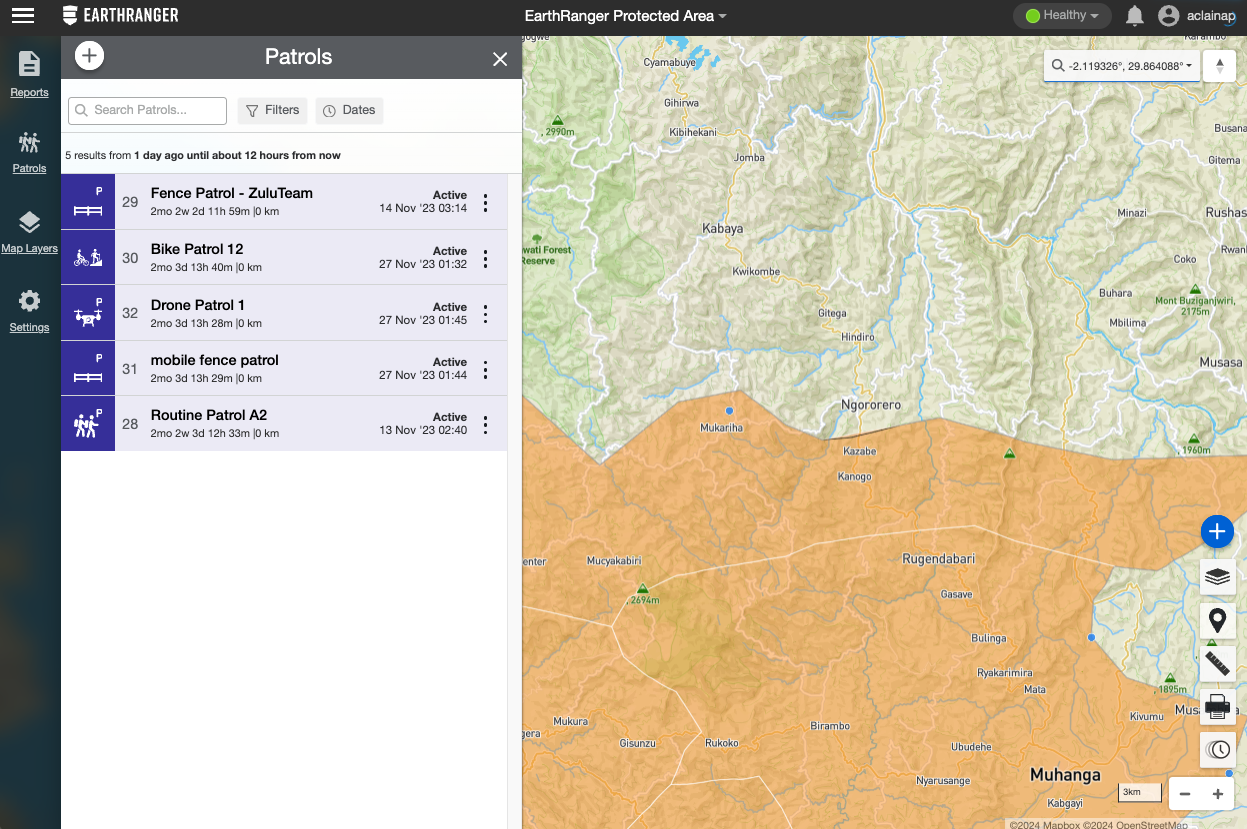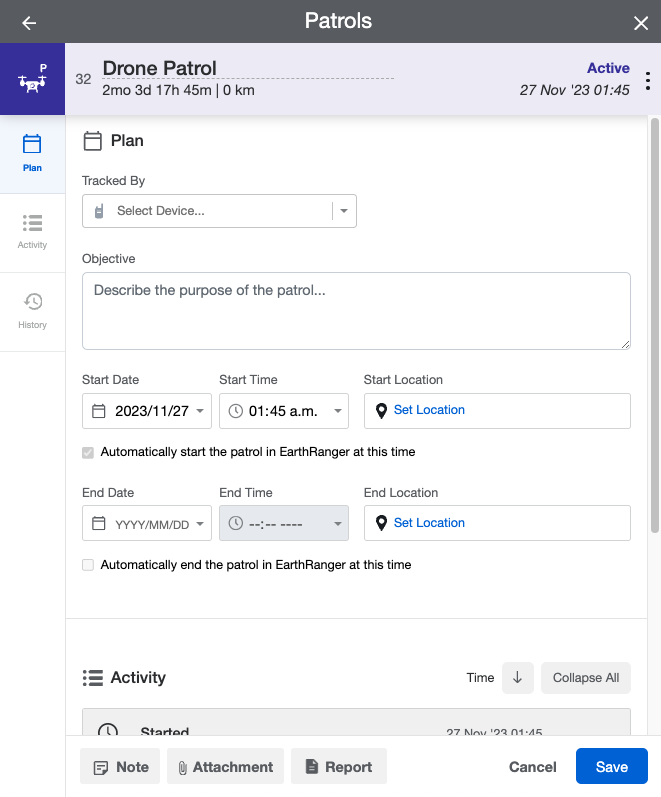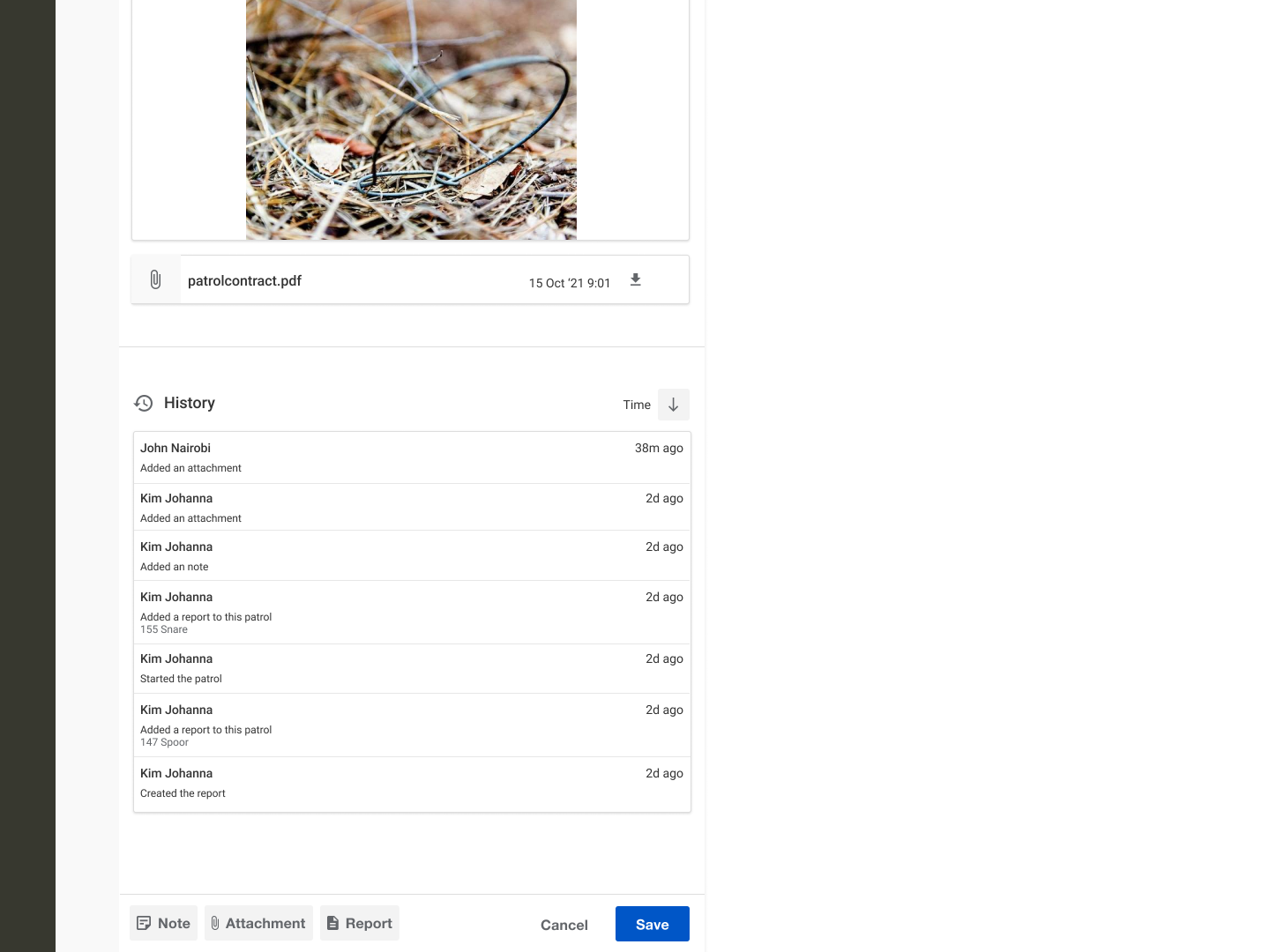In EarthRanger, a Patrol is a way of grouping and organising activity over a period of time and over a tracked distance (temporal segmentation). Think of it as a container that groups the movement of a subject or team and the situations that take place (Events, notes and images) during a defined operation.
A Patrol can include:
- The tracks of a Tracked Subject (for example, GPS radios or devices running ER Mobile carried by the patrol team)
- Events that are logged during the patrol (which can contain data collected in the field)
- Photos, notes or other attachments
Patrols can be useful for documenting:
- Anti-poaching or ranger patrols
- Field investigations
- Wildlife behavior monitoring
- Game drives and ecotourism monitoring
- Operations and maintenance work
- Training activities (for example, canine unit exercises)
Patrols and Events
It’s important to understand how Patrols and Events relate:
- Events represent specific incidents, or pieces of information. They are logged as they happen and stand on their own.
- Patrols provide additional context by grouping together multiple Events, along with notes, media, and location data into a timeline of activity.
For example: a patrol team starts a Patrol in EarthRanger Mobile and goes out for the day. During the patrol, they record Events such as “Wildlife sighting,” “Snare removed,” and “Vehicle breakdown.” All of these Events are linked to the same Patrol, creating a full picture of what happened during that mission.
Tracked Subjects and Patrols
Patrols are linked to a Tracked Subject. This is a device that records the patrol’s movement and could be:
- GPS-enabled radios
- Handheld trackers
- A device running ER Mobile
Real-time updates from the device are ideal, but not required. ER Mobile is designed to store data (e.g. tracked movement, events) while offline and will upload this later for analysis.

Viewing Patrols in EarthRanger Web
You can access Patrols in the Patrols Feed from the sidebar navigation in ER Web.
The Patrols interface is designed so you can see patrol details alongside the main map:
- The Patrols panel appears on the left
- The map remains visible so you can follow patrol movements and locations
Patrol Details
Selecting a Patrol gives you access to its full details, including the Events, Notes, Attachments and Subject tracks associated with it.

When you open a Patrol, you’ll see a summary card with key information about the patrol, including:
- Patrol name: The automatic name that is assigned to the Patrol based on the Patrol type selected. Click to edit and customize the name.
- Status (active, scheduled, cancelled, completed): You can also schedule your Patrols to be Active / End on a determined date, time and location (see more below).
- Objective: A quick summary of the purpose of the Patrol.
-
Start Date: Automatically set when the patrol was started.
You can also manually select a future date for the Patrol to start. - Start Time: You can also select a specific time for this Patrol to start.
- Start Location: Automatically set when the patrol was started. You can select a specific location for where this Patrol should start.
-
Automatically start/end the patrol in EarthRanger at this time:
By selecting this option, the date, time, and location previously selected will determine the automatic starting (or ending) of the Patrol. - End Date: Select manually the date the Patrol should end.
- End Time: You can also select a specific time for this Patrol to end.
- Ability to follow the patrol’s tracks in real time
- Jump to location (quick navigation to the patrol’s last location on the map)
Activity
The Activity section shows Events, Notes and Attachments added to the Patrol.

- You can expand an Event in the Activity section and it will show a summary of the Event inside the Patrol Details.
- We also added Start Time to the Activity section so you can see it as a timeline of what happened during the Patrol.
- Notes are shown within the Patrol Details view so you can see them without leaving the screen.
- Images can be previewed in the Patrol Details and if necessary they can be expanded to full screen.
- The History section includes the details of this Patrol: the individuals involved in creating or editing the patrol details.

Up Next: Create Patrols in EarthRanger Web
